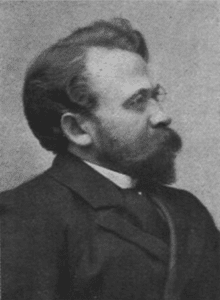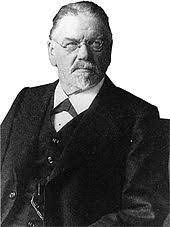Avi Ohry
Tel Aviv, Israel

I wish that when I visited the Abbey of St. Gall in Switzerland years ago, I had also seen the German island of Reichenau and the Swiss village of Heiden 104 km to the south. Both are on Lake Constance, which the Germans call Bodensee and is situated at the point where Germany, Switzerland, and Austria meet. Both towns are important in the history of rehabilitation medicine and the care of the wounded and prisoners of war.
The Blessed Hermann of Reichenau (1013–1054), also known as Hermannus Contractus, was an eleventh century Benedictine monk and famous scholar on the island of Reichenau. The disabled son of the Count of Altshausen, he suffered from a paralytic disease and cleft palate, perhaps cerebral palsy, or spina bifida, or motor neuron disease, or spinal muscular atrophy. His noble parents transferred him to a monastery on the island where it is said he mastered German, Arabic, Greek, and Latin and wrote books on history, music theory, mathematics, and astronomy.1 As I have written previously, before modern rehabilitation medicine, individuals with disabilities were treated by their families or by religious establishments.1 Some famous examples include the Roman emperor Claudius1-3; the old German hero with upper limb amputation, Gottfried von-Berlichingen; the paralytic lawyer of the French Revolution, Georges Couthon1,4; Aleijadinho, the Brazilian disabled hero; and other kings, popes, and rulers who suffered from various disabilities and deformities and paved the way to the modern concept of rehabilitation medicine.1,5

In the small town of Heiden on the Swiss side of the lake once lived Dr. Heinrich Sebastian Frenkel, born there in 1860 and died in Dresden, Germany in 1931. He studied medicine at the Universities of Heidelberg and Leipzig and was a student of the famous neurologist Wilhelm Heinrich Erb (of Erb’s paralysis). After finishing his studies, he returned to Heiden to practice medicine. There he rented a house in Cure Park and bought specialized exercise equipment. He apparently established a center of physical medicine and rehabilitation where patients with neurological problems were treated. He developed mainly therapeutic exercises for those who suffered from ataxia. Patients were referred to him from all Europe and America. The “Frenkel Exercises” became famous.
Many physicians came to learn his methods—among them Rubens Hirschberg (1862–1920), assistant to French neurologist Fulgence Raymond (1844–1910). When Hirschberg returned to Paris, he convinced Raymond to establish a “gymnasium,” or physiotherapy hall, within the Hopital Salpétriére. The renowned German neurologist-neurosurgeon Otfrid Foerster (1873–1941) spent much time with Frenkel. One of Foerster’s famous assistants, Sir Ludwig Guttmann (one of my mentors), told me a lot about the influence of Frenkel on Foerster. In 1913, Frenkel was nominated a professor in Berlin at the Charité Hospital. Frenkel died in Dresden and his body was brought to Heiden, Switzerland for burial.

I can only speculate why the ailing Frenkel moved from Berlin to Dresden. Perhaps he was looking for a cure or relief at the Physiatric Sanatorium at Weißer Hirsch, outside of Dresden, which was opened by German physician Johann Heinrich Lahmann (1860–1905),6 a pioneer of naturopathic medicine. This institution became a well-known sanatorium and was based on the methods of Vincenz Priessnitz (1799–1851)7 and Johann Schroth (1798–1856),8 all three advocates of alternative medicine, with Lahmann in particular supporting loose-fitting clothing, sauna and open-air bathing, and a diet of fruits, vegetables, nuts, whole grain bread, and dairy products.6 It is most likely that, during Frenkel’s stay at Heiden where he developed his clinic and method (1884–1896), he met there another person who entered the pages of history. As described by Time:
A doctor called Hermann Altherr visits a patient at a local guesthouse. It is an old man, exhausted and half-paralyzed with eczema, and clearly of limited means. Like an explorer chancing upon a long-lost jungle ruin, Altherr is startled to discover that his patient is Henry Dunant, founder of the Red Cross movement. The doctor—and much of the rest of the world—had assumed him long dead.
Dunant spent the last quarter of an extraordinary life in Heiden, most of it in a single room in the town’s old hospital. He died there on October 30, 1910.10
Dunant and four other friends from Geneva founded the International Committee for Relief to the Wounded, later to become the International Committee of the Red Cross (ICRC). In 1901, he had won the first ever Nobel Peace Prize. In 1903, Dunant was given an honorary doctorate by the medical faculty of the University of Heidelberg. Yet after founding the Red Cross, he fell into poverty and obscurity, sheltering in Heiden, where very few townsfolk ever warmed to him.
Personally, I have fond memories of the ICRC delegate, who visited me in my cell during my captivity in Egypt during the Yom Kippur War, October 1973. That was a moment of hope and relief.11-14
References
- Ohry A. People with disabilities before the days of modern rehabilitation medicine: did they pave the way? Disabil Rehabil, 2004;26(9):546-8.
- Ohry A & Levy A. The Emperor Claudius and the Valetudinaria. Adler Museum Bulletin (South Africa), 1985;11:11-3.
- Ohry A. The emperor with the shaking head. JR Soc Med, 2000;93(10):550.
- Ohry A & Ohry-Kossoy K. Georges Couthon, a paralyzed lawyer and leader of the French Revolution. Paraplegia, 1989;27:382-4.
- Zwecker M, Zeilig G, Ohry A. Professor Heinrich Sebastian Frenkel: a forgotten founder of rehabilitation medicine. Spinal Cord, 2004;42(1):55-6.
- Heinrich Lahmann. Wikipedia. https://en.wikipedia.org/wiki/Heinrich_Lahmann.
- Grünner O. Vincenc Priessnitz a jeho výnam v evropské balneopsychiatrii. Ke 150. výroŏí otevrení Priessnitzova “Lázenského domu” na Graefenbergu [Vincenz Priessnitz and his importance in European balneopsychiatry. The 150th anniversary of the opening of Priessnitz’ Spa House in Graefenberg]. Fysiatr Revmatol Vestn, 1973;51(5):257-60. Czech.
- Sajner J, Krízek V. 175 let od narození prírodního lécitele Johanna Schrotha (1798-1956) [175 years since the birth of nature-therapeutist Johann Schroth (1798-1956)]. Vnitr Lek, 1973;19(10):1019-21. Czech.
- Alder O. Alt Nationalrat Dr. med. Hermann Altherr in Heiden 1848-1927 [Former National Councillor Dr. med. Hermann Altherr in Heiden 1848-1927]. Appenzellische Jahrbücher, 1928;55:77-84. German.
- Marshall A. A Swiss town celebrates the Red Cross founder it never much liked. Time, Aug 15, 2010. http://content.time.com/time/magazine/article/0,9171,2028090,00.html.
- Ohry A. Being in captivity: the real story. Harefuah, 2018;157(8):520-1. Hebrew.
- Stein JY, Crompton L, Ohry A, Solomon Z. Attachment in detachment: The positive role of caregivers in POWs’ dissociative hallucinations. J Trauma Dissociation, 2016;17(2):186-98.
- Ohry A. Medical and psychological aspects of captivity. Harefuah, 1989;116(11):594-6. Hebrew.
- Ohry A. Extracampine hallucinations. Lancet, 2003;361(9367):1479.
AVI OHRY, MD, is married with two daughters. He is Emeritus Professor of Rehabilitation Medicine at Tel Aviv University, the former director of Rehabilitation Medicine at Reuth Medical and Rehabilitation Center in Tel Aviv, and a member of The Lancet‘s Commission on Medicine & the Holocaust. He conducts award-winning research in neurological rehabilitation, bioethics, medical humanities and history, and on long-term effects of disability and captivity. He plays the drums with three jazz bands.

Leave a Reply